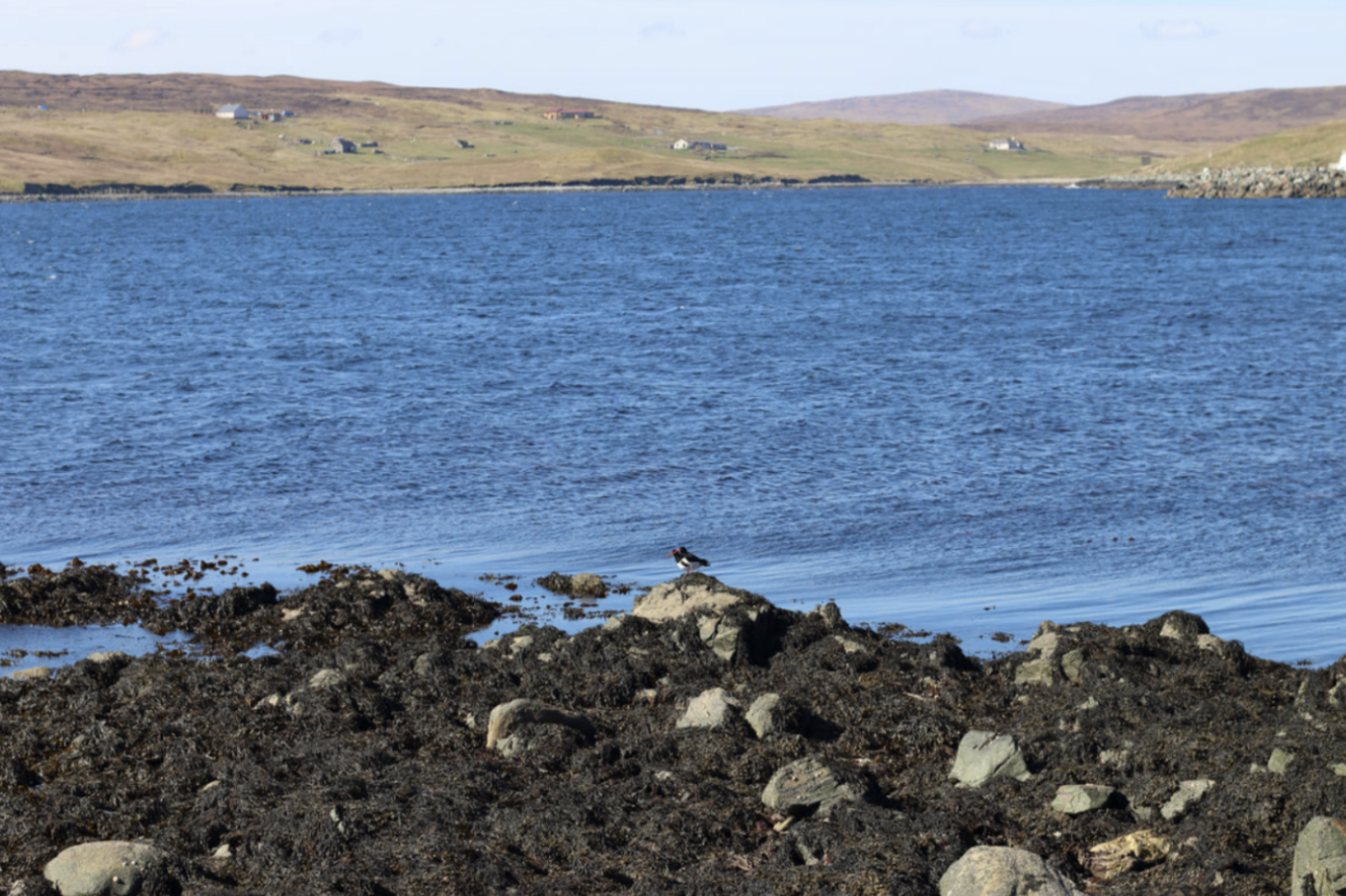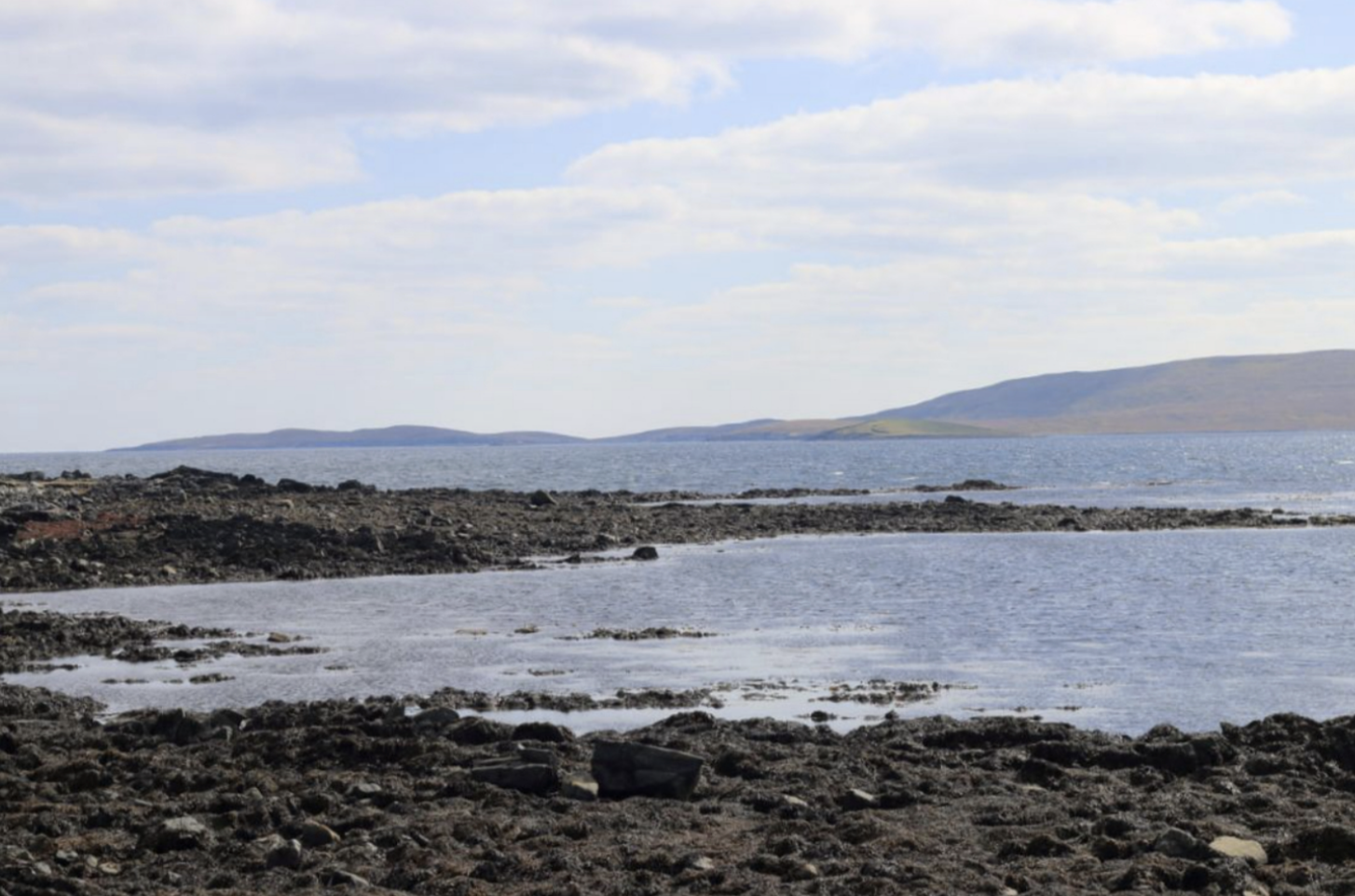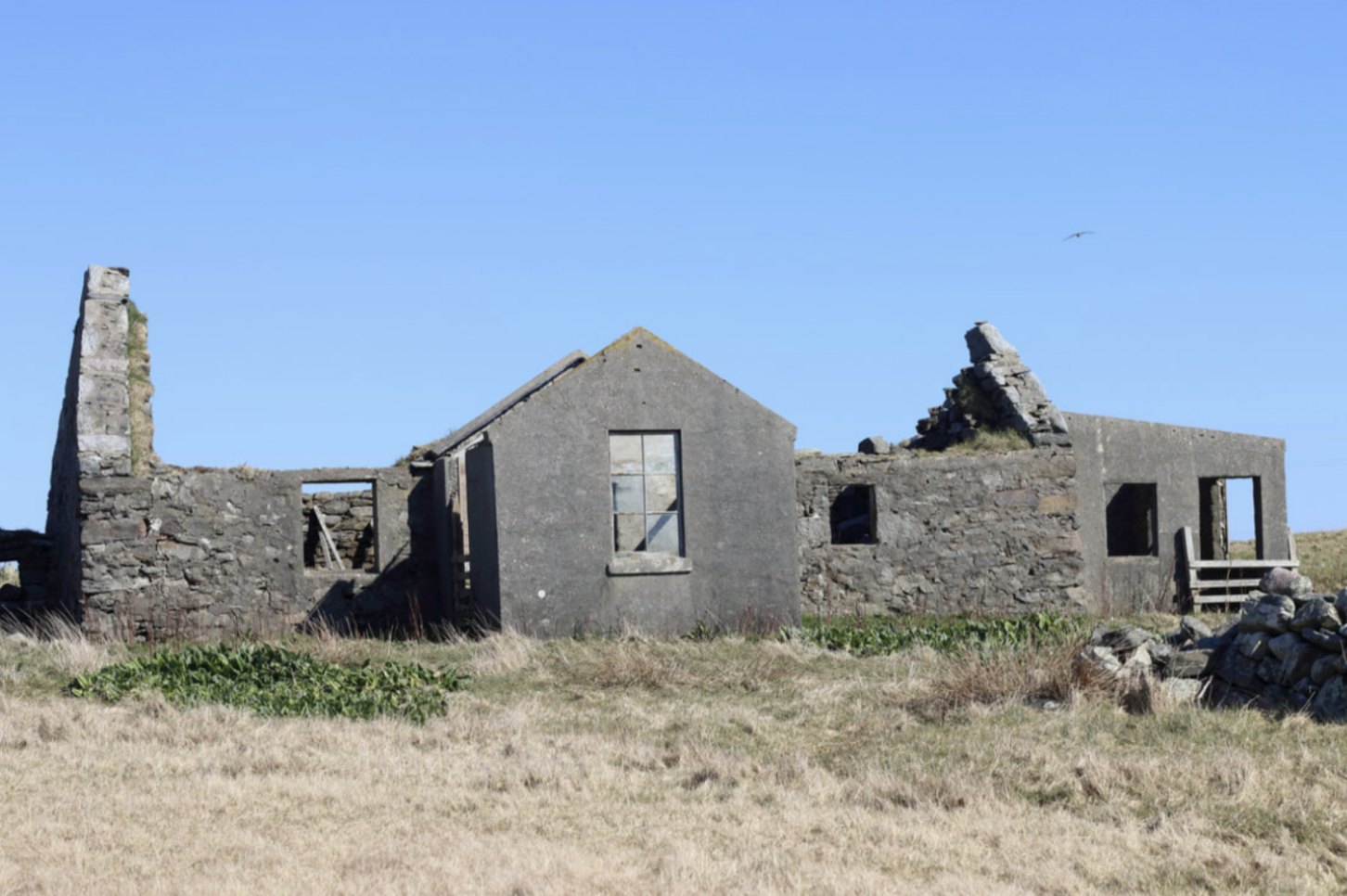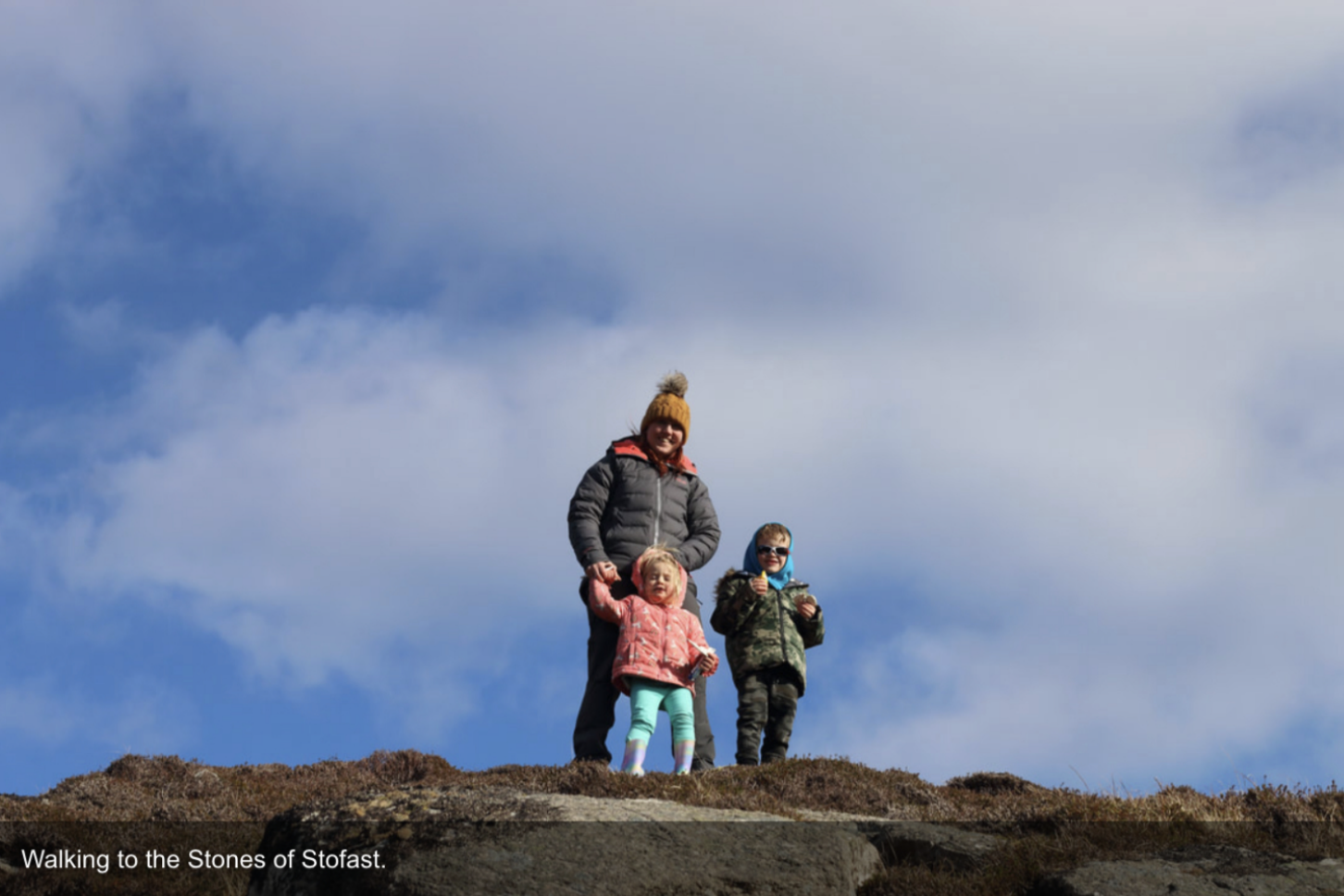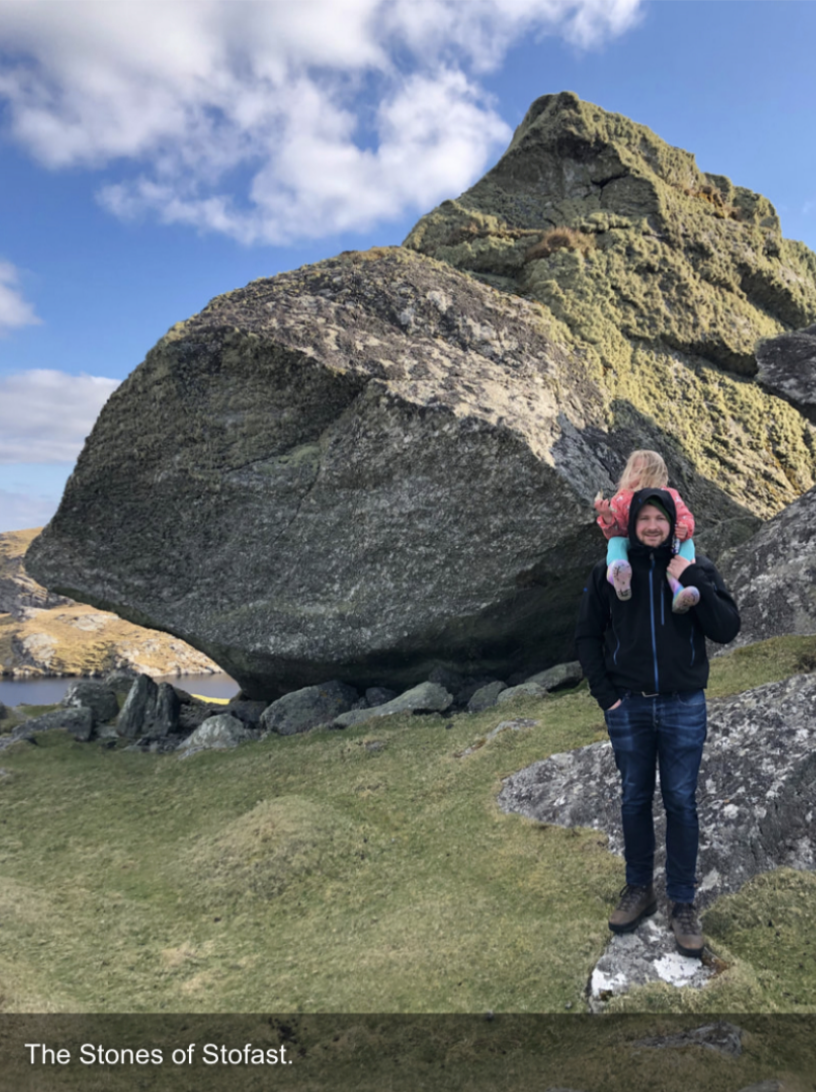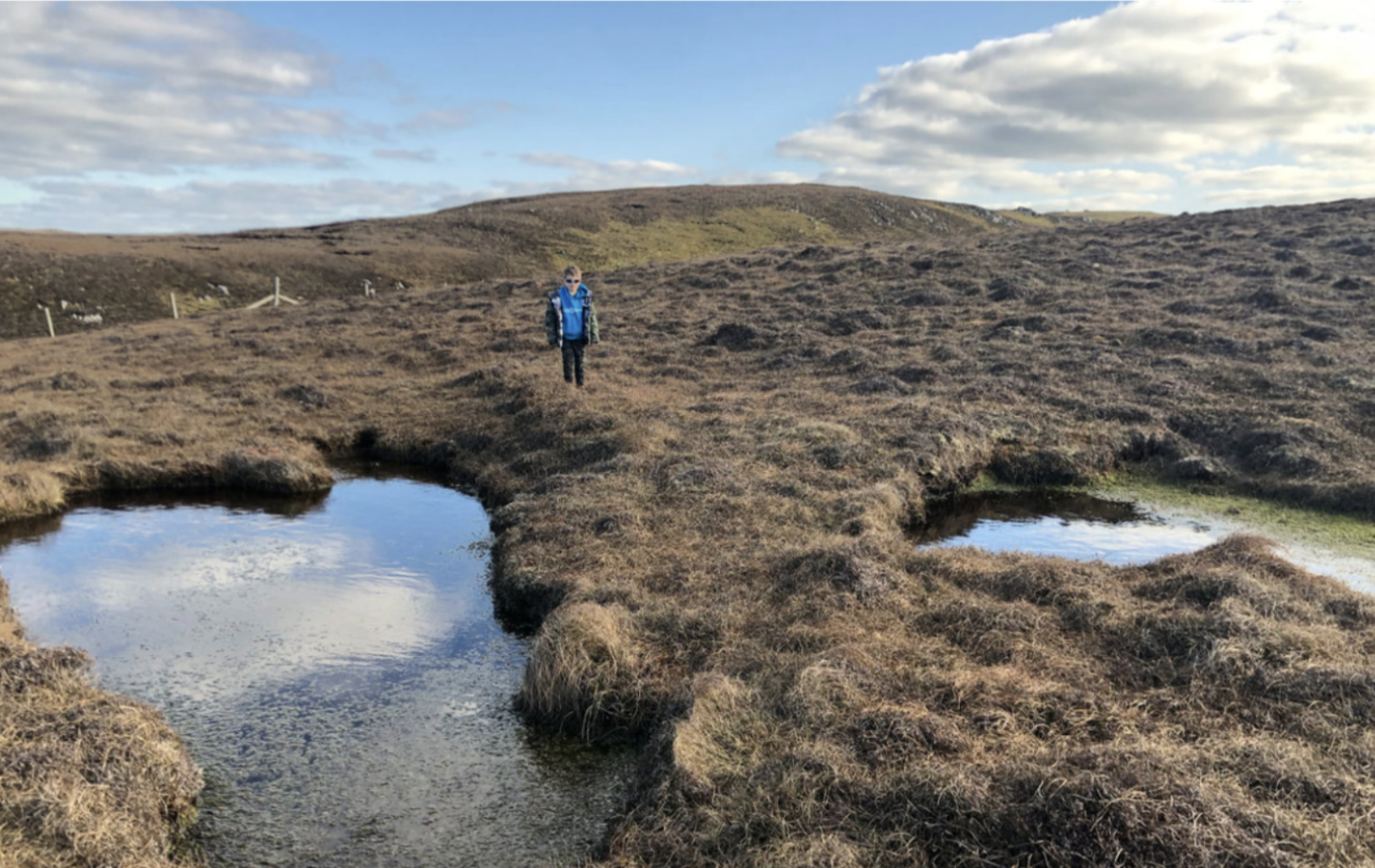East-Gate self catering, Vidlin: A review & itinerary for your stay
Interested in staying somewhere but not sure what to do in the local area? Let Shetland with Laurie help you. In this post, I have teamed up with Karen & Neil Hay who gave us the keys to their newly established self-catering chalet in the village of Vidlin on Shetland's east mainland and told us to explore...
East-Gate self-catering chalet, Vidlin.
East-Gate is a modern, new build which is fresh to Shetland's self-catering market. Just a few miles outside the village of Vidlin and only a stone's throw from the Whalsay ferry terminal at Laxo, East-Gate is ideally placed for exploring this corner of Shetland's beautiful east mainland.
East-Gate is run by Karen & Neil Hay both from Vidlin. Karen says, “I literally married the boy next door!” The couple has two young bairns, and Karen plans to manage the chalet while Neil works shifts at Sullom Voe Oil Terminal.
Recently completed, 2019 is the first year that East-Gate will open its doors and welcome visitors. The initial thing which you notice as you enter the chalet is that the standard of finish is very high, and the smell of fresh paint still fills the space, making for a warm and welcoming first impression.
From the outside the building is understated and modest, giving away no clue to its bright and modern interior. The chalet really packs a punch as you enter into the deceptively large open-plan kitchen-living space which boasts vaulted ceilings and additional skylights – flooding light into the already bright and spacious room. Karen and Neil have carefully considered the finish – which is flawless throughout; with a modern, high-gloss kitchen exuding elegance, to the generous bathroom with walk-in shower, and an additional en-suite shower-room, servicing the master bedroom.
Their attention to detail is obvious; not just in the architecture and design, but in the boxes of toys in the cupboard – for both boys and girls, of all ages – the highchair, and all the children’s plates, bowls and cups. All this combined, made for a stress-free visit.
The bedrooms are clean, fresh and welcoming, with crisp white sheets and roman blinds. Karen has also provided a hairdryer (which is far better than mine at home) – so save space in your case and leave that behind!
Despite being finished to a high standard, the chalet is very practically laid out, and the kitchen is well-equipped for any cooking that you may do on your stay. Often in self-catering, it's the case that you begin to cook and realise that the familiar sieve, grater and parer are absent – this is not an issue here, the kitchen contains everything (even the things you didn't know you needed!), including a filter coffee machine.
If you are looking for a family-friendly stay, then this is the place to book. East-Gate is perfect for the young family who wants space to play and explore. The bedrooms are at one end of the house, with a door into the hall to block any noise from the living-room, and outside there is safe space to play with a fenced garden and a path around the house – perfect for running off energy or cycling before bed!
Things to do at East-Gate:
The first thing that struck me as we pulled up and got out the car was the sound of the laverock (skylark), this is a species of bird that is endangered throughout the UK, but here in Shetland, we have about 30,000 breeding pairs – representing a significant proportion of the UK population. Farming techniques have hampered this little songbird throughout the country, but here in Shetland they are common in rural areas like Vidlin, and the little laverock at East-Gate never let up her merry song the whole time we were there. It truly is an uplifting sound and a real sign that spring is in the air (we were staying in mid-April).
Not sure what to listen out for? Hear the laverock sing, here.
Birdwatching
So that’s the first thing to do, get out the binoculars and look at the birds – they’re in abundance here. Watch the lapwing fleeting and diving through the air in a frenzied flight. This impressive wader has distinctive broad, dark wings with rounded white tips – the dark wings and collar contrasting sharply by a white underside. The shalders (oystercatchers) can be seen – generally in pairs – working the shoreline. Watch as they use their strong orange bills to pick limpets from the stones – and listen for the ‘pop’ as the conical-shaped mollusc is torn from its rock.
At night, step outside and hear the haunting call of the horsegok (snipe) as it tumbles through the air (to listen to the horsegok, clickhere). Another haunting call is that of the whaap (curlew), and you can listen to that (and more)here. Both the horsegok and whaap can be heard from East-Gate, and with no surrounding noise pollution, the birds are yours to enjoy.
Otter-spotting
East-Gate is the perfect place to do a bit of otter spotting. Karen snapped this photo of an otter just a few days before our visit. The banks (shoreline) in front of the chalet is home to at least two otter families. So how could I resist a little otter spotting? And with a spring in my step and brimming with excitement and hope, I took my small herd of elephants down to the shore to look for the otters.
Anyone familiar with otters will know that a two and six-year-old are not a great combination to take when trying to seek out this elusive mammal. So, with this in mind, I left them on the beach gathering shells and sea-glass (with dad), and set off silently – stealthily – in search. I knew they were around – their poo was everywhere, but I had no luck and never spotted any.
Otters are tough to seek out, and if you want to do some homework before you arrive, I would recommend Otters in Shetland, The Tale of the Draatsi by Richard Shucksmith & Brydon Thomason – both local experts (unlike me) who know a lot more about these elusive animals and their habits than I do. You can buy that book here, or borrow it from Shetland Library.
I would say that you are best to look for otters either at first, or last light, or a few hours either side of low tide and you will need: patience, a flask of tea (or stronger) and thermals.
The Shoreline
Otter-spotting is not for everyone. It’s certainly not for the herd of elephants that I call my children. But, the little beach is a treasure trove of pretty shells, stones and shoreline creatures to find and explore. We spent hours just playing on the beach and scouring the shoreline.
This area was a favourite of local poet Rhoda Bulter (1929-1994) who often stayed at Da Horn, a croft which now stands in ruin at the water’s edge. It is said that Da Horn inspired much of her poetry.
There is more information about Rhoda and her poems in The Cabin museum and again,Shetland Libraryhas many of her poetry books to borrow.
Cabin Museum
Open May to September on Tuesday, Thursday & Sunday from 1-5pm.
If military history and the First and Second World Wars are one of your interests then this is the place for you. The Cabin museum sits just at the back of East-Gate, a short walk across the road.
The late Andy Robertson founded what began as a small collection of medals in 1978. The collection has since grown, and now fills the museum to the rafters — an eclectic collection which has branched off into everything and anything related to Shetland’s social history.
The Cabin houses a vast assortment of histoic items; from war uniforms, weapons and tin hats to wedding dresses, photographs and an extensive archive belonging the Lunnasting History Group. The list is endless, and all the items are as exciting as the story associated with them.
The Cabin is well worth a visit and is now run by the family of founder, Andy Robertson, and the Lunnasting History Group who help out one day a week.
Visits to The Cabin can also be arranged by appointment, and we are very grateful to Stanley for opening up for us and putting on the heating.
Lunna
It's worth stopping at Lunna and parking up just to have a walk around and explore the area.
Lunna Kirk sits by the sea in the shadow of the impressive Lunna House. It is well worth a visit. The kirk is said to be the oldest church which has been in continuous use in Shetland for Christian worship. It's thought that there has been a kirk here since the 1100s and an early monastery on Chapel Knowe, just to the north.
The kirk itself is an unusual design, with thick buttresses and a leper's squint, designed to allow lepers to hear the service and see the altar without physically coming into contact with the congregation.
Lunna kirk is open, and visitors are welcome to go in and have a look around. There is a donations box for anyone who would like to leave a gift to help with church funds.
Lunna House, a 17th-century laird’s house, is also an important location for anyone interested in the Shetland Bus Operation. A secret operation which took place during the Second World War between Shetland and Nazi-occupied Norway. The Operation which ran from 1941 aimed to remove refugees from Nazi-occupied Norway and bring weapons and supplies in.
Lunna House was a base in the early days of the operation before it was moved to Scalloway. Lunna provided an excellent sheltered harbour, secrecy and a base in the form of Lunna House which sits proudly on the hill. For anyone interested in the Shetland Bus story, a visit to the Scalloway Museum is a must.
Lunna House and the surrounding area has a fantastic ‘designed landscape’ – the formal structures built around the house were laid out in the 18th century and furthered in the 19th century. These include; Gothic ornaments, such as the beach cobble finials of the gates to the south-west of the house, and a small folly on the hill, known as Hunter's Monument – that was formerly used as a lookout by the lairds (landlords). The harbour was constructed in the 19th century, along with a walled garden and an impressive lime kiln which sits near the pier.
Walking in the area:
There are some fantastic walks in this area. Karen has provided a copy of Walking the Coastline of Shetland: Eastside by Peter Guy in the chalet. This has some fantastic walking options. Below I have outlined a few walks that I recommend in the area.
There are some fantastic walks in this area of Shetland
Stones of Stofast
Walk: 2 hours
2 miles (3.5km)
This is a beautiful walk which will take you from the road, over the hill and onto Fugla Water and the Loch of Stofast. Between these two lochs – straddling the hill – are the great glacial erratics that make up the Stones of Stofast – dumped there, as if by the hands of giants. An imposing sight on top of the hill, commanding incredible panoramic views.
The walk begins from a non-descript lay-by beside the cattle-grid on the road from Vidlin to Outrabister. The trail is helpfully signposted with an arrow pointing to the hill and a small route-finder map pinned to the fence post. This is enough to get you on your way, and I’d recommend snapping a photo of the map on your smartphone (providing you have one) to orient yourself along the way.
(please note that this walk, and none of my walks, are on a bus route, the nearest bus would take you into Vidlin (3 miles away), so I would recommend using a car to get to the walk start point).
From the starting point, head straight over the hill, sticking to high ground to avoid the bog (particularly in winter, early spring, or after heavy rain). We returned to the car across lower land, skirting Fugla Water and very quickly began to play hop-scotch in the bog as we tried to pick a route through it – although this may be fun, it does require a certain amount of agility (and patience), and it is worth remembering that bogs can be dangerous.
As you make your way to the crest of the first hill, stop and take in the breathtaking views. To the north-west, views across to Mossbank, Firth and Burravoe (Yell), as well as the islands of Linga, Fish Holm, Orfasay and Samphrey. And to the east, views to Skerries and Whalsay. Further south-east, the Noup of Noss can be seen clearly on a fine day (like we had). It feels like a unique vantage point, as you’re able to view Yell and Skerries almost in one breath – areas we assume to be remote, closely-tied together by the sea.
The landscape is a glacial one, like much of Shetland, it has been carved by the last Ice Age to pass through about 10,000 years ago. The massive stones have been laid down – not far from where they originated from – by a glacier. The Stones were originally one large boulder, weighing an estimated 2,000 tonne, now broken in two by the action of repeated freeze-thaw, the Stones were once part of a nunatak (an exposed, rocky ridge rising above the ice), which collapsed following the retreat of the ice.
It is only once you get up-close-and-personal that you can appreciate the tremendous power in that ice that carried, and moved these enormous stones – no photo will ever do justice to their sheer enormity. Being the romantic that I am, I still like to think they were put there by giants, and are now home to the trows (trolls). The whole landscape has that eerie ‘trowie’ feel that is so familiar in the wilds of Shetland.
The Stones are a great spot for a picnic, to sit and soak up the history and geology of this special hidden corner of Shetland's mainland.
This walk is a short one, but a much longer version of it can be done, taking in the entire Lunna Ness peninsula. Route details for that can be found here.
A little word on the wildlife – Lunna Ness is an SSSI (Site of Special Scientific Interest) because of its thriving (yet elusive) otter population. And although we didn’t spot otters at East-Gate, I did catch a glimpse of one at Lunna, but it evaded my camera lens before I could capture it as proof – so you’re going to have to take my word on that one!
Sandwick, Sweening Voe
Walk: 4 hours
3 miles (4.8km)
This is a walk which I didn’t do with my two and six-year-old, but I have enjoyed it immensely in the past. This would be a great hike to do if you are staying at East-Gate, but it is challenging.
For this walk, park at the end of the Sweening road and follow the ‘sheep-gaet’ (sheep path) along the sheer steep-sided slopes of Sweening Voe until the track opens out and reveals a sandy beach and wide bay.
At the far end of the beach is the ruin of the croft of Sandwick which was home to the Morrison family until about 1980 when they moved to Vidlin. The house quickly fell into disrepair and now stands in ruin.
Please note that this is quite a challenging walk and anyone with a fear of heights should avoid it as it is a steep drop from the path to the sea in places (certainly not a trail for the two and six-year-old). I allowed an evening to do this walk and explore the area (c. 4 hours). So arm yourself with an OS map and explore – I promise, it’s worth it!
There are some beautiful photos of the house when it was inhabited on the Shetland Museum & Archives photo archive which can be seenhere.
---
Another great walk is out to the house at Bonidale, looking across to West Linga and Whalsay.
For this walk, park at the end if the road at Lunning and head south (again using an OS map for reference).
Laxo Burn
Laxo burn is another great walk and a fantastic spot to explore – even for an hour or so after tea. Just a mile from East-Gate you can go and throw sticks, race siggy-boats (boats made from the leaves of the water iris), or simply follow the course of the burn.
If you read my blog post about making trench cake in my great-granny’s mixing bowl, then you can see her old house (the big white one) at the head of Dury Voe (Laxo House). If you missed it, you can read that blog posthere.
It was a real joy to wake up to the morning sun at East-Gate and eat breakfast at the sunny dining table while watching the sheep outside. It really was such a relaxing experience. I would thoroughly recommend this fantastic chalet, particularly if you are looking for a good base to explore this part of Shetland, or a family-friendly retreat to escape for a few days.
There are plenty of amenities in the local area: Vidlin shop is only a couple of miles away, as is the village of Vidlin with its marina and well-equipped play park.
There is so much to do in this area, and these suggestions are by no means exhaustive. Why not take a trip to the island of Whalsay, the ferry is in walking distance of East-Gate. Or, head to Busta House Hotel for a bar supper to save cooking? Or explore Nesting? Take the ‘Nesting Loop’ and visit the First World War naval air station at Catfirth, or count the swans on the Loch of Benston. Do you have a two and six-year-old-too? How about a trip to the Mud Kitchen at the Nesting Primary School which welcomes visitors – whatever you decide, let this be a guide, and most of all – enjoy everything that this area and East-Gate has to offer.
If you have found this useful and have tried any of the routes while staying at East-Gate then I would love to hear from you, remember to get in touch and tell me how you got on. Alternatively, if you would like a tour, just let me know.
I can't wait for our next holiday at East-Gate, thank you again to Karen & Neil for a fabulous stay.
To book a stay at East-Gate and unlock your Shetland adventure you can contact Karenhere.
With love,







